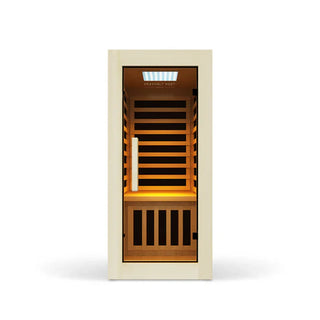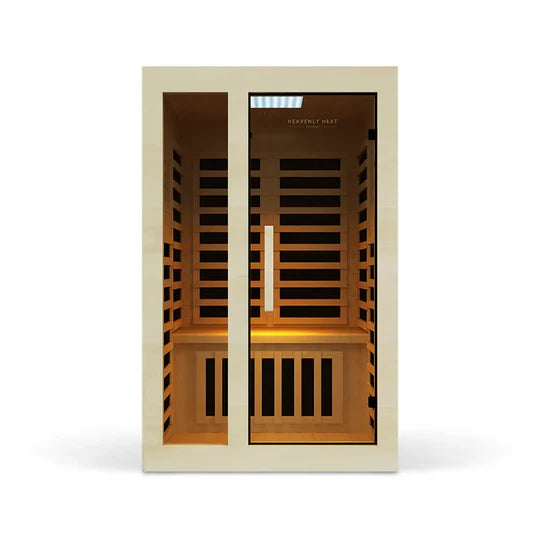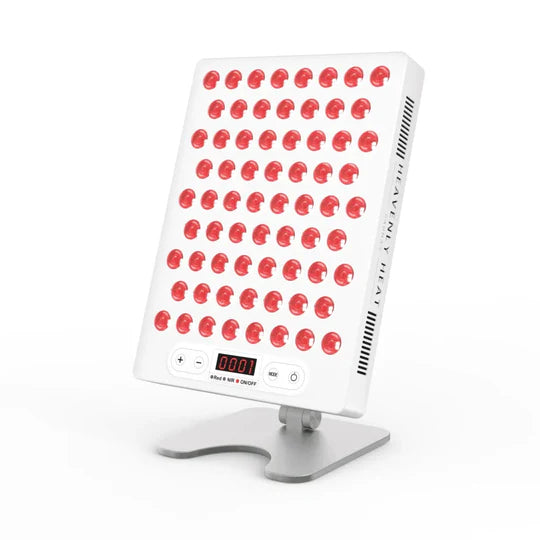Red Light Therapy for Muscle Recovery: Tips and Benefits

Red light therapy has gained attention for its potential to accelerate muscle recovery and reduce soreness.
This non-invasive treatment uses specific wavelengths to penetrate the skin, promoting cellular regeneration and enhancing blood flow.
You may have heard claims that red light therapy speeds up healing, reduces inflammation, and boosts muscle strength, but how much of this is backed by research?
In this article, we’ll dive into the science behind red light therapy and explore its true impact on muscle recovery.
Key Takeaways
- Red light therapy can significantly enhance muscle recovery after intense physical activity.
- Administering red light therapy before workouts may improve muscle performance and minimize exercise-induced damage.
- A balanced diet with lean proteins, healthy fats, and plenty of fruits and vegetables supports optimal muscle recovery.
- Staying well-hydrated is crucial for nutrient delivery, waste removal, and muscle flexibility during recovery.
- Adequate sleep promotes muscle healing by reducing pain and inflammation while boosting growth hormone levels.
- Massage techniques can enhance recovery by improving blood flow, reducing tension, and elevating mood after intense exercise.
Does red light therapy help with muscle recovery?
- Red light therapy helps muscles feel less sore after exercise: Yes, red light therapy (RLT) can significantly aid muscle recovery after intense physical activity. A 2013 study by Lucio Santos Borges and colleagues found that using red light after tough workouts reduced soreness and helped muscles recover faster.
- People who got red light therapy recovered better than those who didn’t: In the study, 17 healthy men did an intense exercise that caused muscle damage. One group got red light therapy afterward, and the other didn’t. Those who received the treatment had less soreness, lost less strength, and had better movement in their joints up to 4 days later.
- Using red light before exercise can protect muscles from damage: A 2013 review by Paul A. Borsa and team found that applying red light therapy before strength training helped muscles work better and protected them from getting damaged during exercise.
- People could exercise longer and harder with red light therapy: The same review showed that people who used red light therapy before working out had delayed muscle fatigue and better recovery. That means they could push themselves more and bounce back faster afterward.
- Red light therapy helped people do more reps and stay energized: A 2015 review by Ernesto Cesar Pinto Leal-Junior looked at 13 studies and found similar results. People who used red light therapy before workouts could do more repetitions and didn’t get tired as quickly, leading to better workout performance.
- Red light therapy can help you recover faster and train more often: All this research suggests that red light therapy makes recovery quicker and easier. If your muscles feel better and recover faster, you can train more often without being held back by pain or fatigue.
- If you take your workouts seriously, red light therapy is worth trying: For anyone who works out regularly or pushes themselves physically, adding red light therapy to your routine could help you feel better, recover faster, and improve your performance over time.
Tips to maximize muscle recovery
Healthy diet
- Eating the right foods helps your muscles heal: A healthy diet is essential for muscle recovery because it fuels your body with the nutrients it needs to repair and grow stronger. Focus on incorporating lean proteins, healthy fats, and plenty of fruits and vegetables into your meals.
- Protein-rich meals repair tired muscles faster: Proteins provide the building blocks for muscle repair. Including enough protein in your meals helps your muscles heal and grow after physical activity.
- Fruits and veggies give your body the support it needs: Vitamins and minerals from fruits and vegetables keep your body working well, which helps speed up the recovery process.
- A good diet makes red light therapy work even better: By nourishing your body properly, you boost the effects of red light therapy, helping your muscles recover faster and feel less sore.
Stay hydrated
- Drinking enough water helps your muscles heal faster: Staying hydrated is important for recovery because it helps carry nutrients to your muscles, flush out waste, and keep muscles flexible. This can reduce soreness and help your body heal more quickly after exercise.
- Most athletes know dehydration is bad for performance: A 2021 study in the Journal of Human Kinetics found that nearly all college track and field athletes (97.3%) were aware that dehydration can hurt their performance.
- Waiting until you're thirsty means you're already behind on hydration: Even though many athletes knew the risks, more than half (50.5%) still believed that feeling thirsty was the best way to tell if they needed water, which isn’t true. Thirst is a late sign of dehydration.
- Learning about hydration helps people stay better hydrated: The same study showed that athletes who had more knowledge about hydration made better choices about drinking water. This shows how important hydration education is for recovery and performance.
Sleep more
- Sleeping more gives your muscles time to heal: Getting enough sleep is key for muscle recovery after intense exercise. Without proper rest, your body doesn’t get the chance to fully repair the tiny tears in muscle tissue that happen during workouts.
- Studies show more sleep helps muscles recover faster: A 2021 study by Mounir Chennaoui and colleagues explored how sleep affects muscle healing, especially in high-demand groups like athletes and military personnel. The findings clearly showed that more sleep speeds up physical recovery.
- Sleeping longer helps reduce muscle pain and swelling: The study found that extending sleep helps lower pain and inflammation in the muscles. This makes it easier to recover and feel less sore after hard training sessions.
- Good sleep increases hormones that repair muscles: Getting more rest boosts the release of important hormones like growth hormone (GH) and IGF-I. These hormones play a big role in repairing and rebuilding your muscles while you sleep.
- Sleeping enough helps you bounce back and avoid injuries: With less pain, lower inflammation, and better hormone support, your body recovers faster and stays ready for your next workout, reducing the chance of getting injured.
Massage
- Massage improves blood flow, which helps muscles heal faster: Massage helps with muscle recovery by boosting circulation. When blood flows better, muscles get more oxygen and nutrients, which helps repair them after workouts or events.
- Massage relaxes tight muscles and reduces stiffness: It loosens up muscle tension and helps reduce stiffness, making your body feel more flexible and comfortable after physical activity.
- Massage helps you feel calm and improves your mood: Besides helping your body, massage also helps your mind. It promotes relaxation, lowers stress, and can lift your mood, giving you a mental boost during recovery.
- Massage can support performance and help prevent injuries: A 2012 study by researchers Weerapong, Hume, and Kolt showed that massage can improve recovery and even help with performance. It may also reduce the chance of getting hurt by improving how your muscles and joints move.
- Massage reduces soreness and makes movement easier: The same study found that massage can ease soreness after intense exercise. It also helps improve flexibility, making it easier to move and train again sooner.
What wavelength of red light therapy to use for Muscle Recovery?
For muscle recovery, using red light therapy at a wavelength of 630 nm proves effective. A 2014 study demonstrated this when they had 17 young men perform a strenuous workout.
After the exercise, one group received red light therapy, while the other received a placebo. The group treated with 630 nm red light reported less muscle soreness, maintained more strength, and experienced a better range of motion for up to four days post-exercise.
References
https://link.springer.com/article/10.1007/s10103-013-1486-z
https://meridian.allenpress.com/jat/article/48/1/57/110801/Does-Phototherapy-Enhance-Skeletal-Muscle
https://link.springer.com/article/10.1007/s10103-013-1465-4
https://pmc.ncbi.nlm.nih.gov/articles/PMC8336541/
https://www.jsams.org/article/S1440-2440(21)00132-8/abstract
https://link.springer.com/article/10.2165/00007256-200535030-00004













































